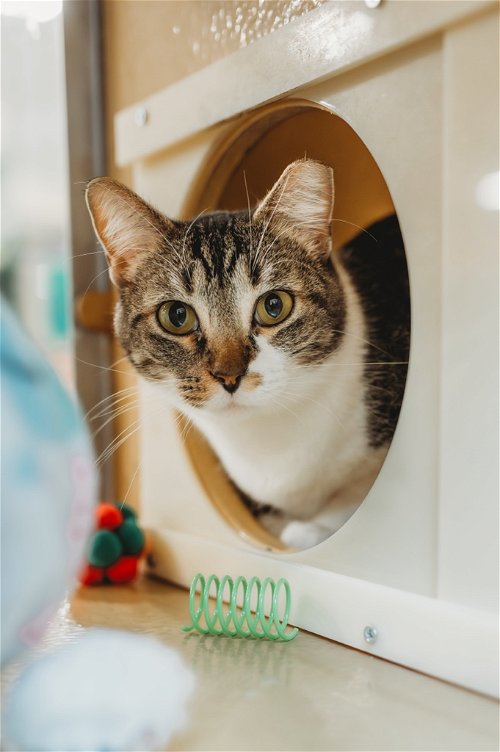| ||||
Donations
Year round donations
are always needed. It's easy to do. Just click on your choice below. We are very grateful for your generouse spirit.  |
Thinking Outside the LitterboxSolving Feline House Soiling by: Winn Feline Foundation www.winnfelinehealth.org ©2008 The most common behavior complaint owners have about their cats is housesoiling. Behavioral problems are also one of the leading reasons for euthanasia of cats in North America. The most typical scenario is a cat that both uses its litter box and also eliminates outside it. These cat typically housesoil with urine or stool, but not usually both. It is very important to discriminate between medical and non-medical causes of this problem. Feline lower urinary tract disease (FLUTD--formerly called FUS) is very common and can be associated with housesoiling. Cats with FLUTD may housesoil with urine or stool or they may spray urine. Some other diseases may also be associated with housesoiling, such as kidney disease, hyperthyroidism, diabetes, constipation, and inflammatory bowel disease . It is important for the veterinarian to take a good history of the problem, and tests may be required to rule out medical problems. We also have to remember that not all housesoiling behaviors are abnormal ones – most problem behaviors are actually normal behaviors that are exhibited in an inappropriate manner or location. For example, territorial spraying is a normal behavior for the cat, but an undesirable behavior in a pet. When your veterinarian is taking a history of a housesoiling problem, be prepared to give information such as:
There are three basic categories of housesoiling problems: 1. Normal elimination at an inappropriate location (the most common type) 2. Marking behavior such as spraying (which must be distinguished from urinating by the cat’s body posture and where the urine is deposited) 3. Medical disease … or a combination of any of the above. After taking a complete history of the problem, your veterinarian will want to run some medical tests . A urinalysis is always indicated when housesoiling involves urine and is usually necessary if stool is involved as well. It is not unusual for a cat to have a medical problem when the history is suggestive of only a behavioral problem. Testing may also involve blood tests for kidney disease and other diseases if appropriate. A diagnosis is reached by determining which of the potential contributing factors (both medical and psychological) are involved. Reaching a working diagnosis enables the veterinarian to suggest which factors must be modified during treatment. A treatment plan is then formulated. The plan should be designed to do two important things:
1. Entice the cat back to the litter box using any changes necessary 2. Modify the inappropriate site to make it unattractive or unusable It helps to understand that elimination in cats is actually a sequence of individual behaviors, and a problem can develop at any of the steps involved. In nature, cats have an infinite variety of sites and materials for elimination, but in a home setting they are expected to use a restricted number of sites (often only one) and a restricted type of material (usually only one choice).
|
Would you like to meet? |






